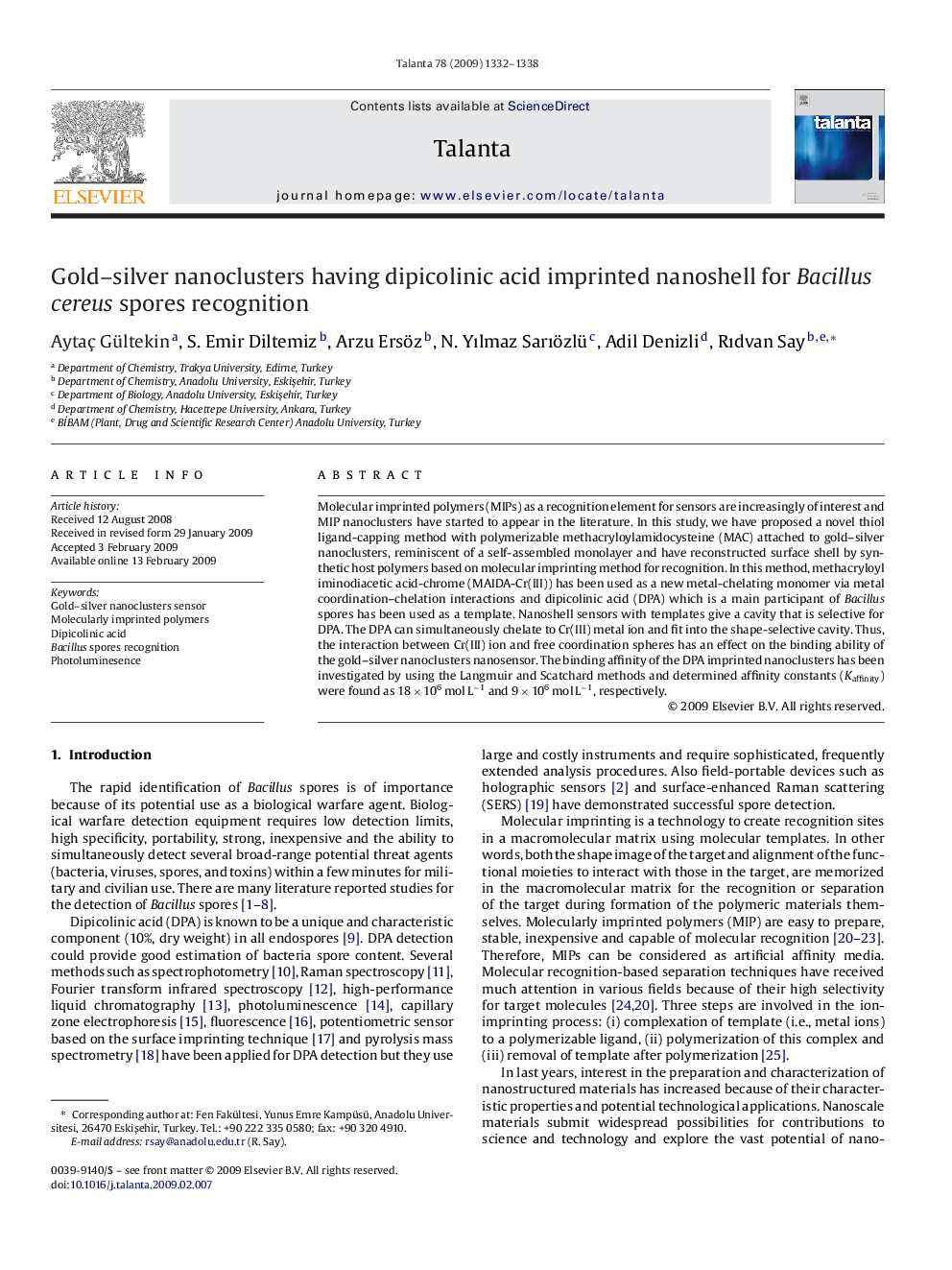| کد مقاله | کد نشریه | سال انتشار | مقاله انگلیسی | نسخه تمام متن |
|---|---|---|---|---|
| 1246879 | 1495853 | 2009 | 7 صفحه PDF | دانلود رایگان |

Molecular imprinted polymers (MIPs) as a recognition element for sensors are increasingly of interest and MIP nanoclusters have started to appear in the literature. In this study, we have proposed a novel thiol ligand-capping method with polymerizable methacryloylamidocysteine (MAC) attached to gold–silver nanoclusters, reminiscent of a self-assembled monolayer and have reconstructed surface shell by synthetic host polymers based on molecular imprinting method for recognition. In this method, methacryloyl iminodiacetic acid-chrome (MAIDA-Cr(III)) has been used as a new metal-chelating monomer via metal coordination–chelation interactions and dipicolinic acid (DPA) which is a main participant of Bacillus spores has been used as a template. Nanoshell sensors with templates give a cavity that is selective for DPA. The DPA can simultaneously chelate to Cr(III) metal ion and fit into the shape-selective cavity. Thus, the interaction between Cr(III) ion and free coordination spheres has an effect on the binding ability of the gold–silver nanoclusters nanosensor. The binding affinity of the DPA imprinted nanoclusters has been investigated by using the Langmuir and Scatchard methods and determined affinity constants (Kaffinity) were found as 18 × 106 mol L−1 and 9 × 106 mol L−1, respectively.
Journal: Talanta - Volume 78, Issues 4–5, 15 June 2009, Pages 1332–1338